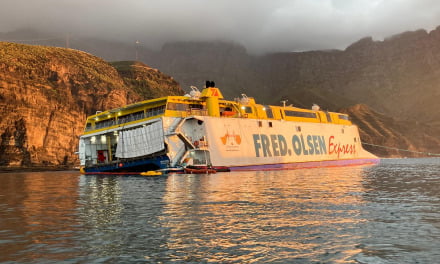The Canary Islands Ministry of Health, today, updated health alert levels following the latest epidemiological report from the General Directorate of Public Health, using data consolidated as of March 9.
The report analyses the evolution of health indicators regarding COVID-19, and confirmed the island of Fuerteventura could drop to level 2, thanks to improvements in the epidemiological indicators.
The rest of the islands maintain their current alert levels for another week. This means that Gran Canaria, Tenerife, La Palma, La Gomera and El Hierro remain at alert level 3; and Lanzarote (where La Graciosa is epidemiologically included) at level 2. The change in level on Fuerteventura will come into force at 00:00 this Friday, March 11.
Fuerteventura is moving to level 2 as care impact indicators continue to improve, with a downward trend that has been maintained over the last 15 days. Over the last week there was also a notable decrease in incidence indicators.
The health alert levels, determined by the Ministry of Health and the Autonomous Communities, evaluate the epidemiological situation in each territory based, fundamentally, on hospital pressure (occupancy indicators are now the determining factor for analysing the trends and severity presented by COVID-19) and the incidence that causes transmission of the coronavirus, as monitored and modified within the Inter-territorial Council.
Healthcare indicators
The daily average number of occupied conventional hospital beds has decreased by 24% compared to the previous week, with an average occupancy of 6.1%, indicating medium risk.
Hospital bed occupation on Gran Canaria, Tenerife and La Palma is at medium risk; La Gomera and El Hierro at low risk; and Fuerteventura and Lanzarote at very low risk.
The number of occupied ICU beds continues downward, by 19% compared to the previous week’s evaluation. ICU occupation for the whole Archipelago also stands at 6.1%. Tenerife and Gran Canaria are at a medium risk level, La Palma at low risk, while the rest of the islands remain in controlled circulation.
Epidemiological indicators
In the Autonomous Community as a whole, between March 1 and 7, 8,865 new cases of COVID-19 have been reported, a reduction of 13.8% in the daily average of new cases compared to the week previous.
These data respond to a 13.8% reduction in the Accumulated Incidence (AI) at 7 days in the Canary Islands, having dropped from a weekly average of 472.7 cases per 100,000 population, to 407 cases per 100,000.
All the islands are still viewed as at very high risk for this indicator, except Fuerteventura, which drops to high risk, while increases in this indicator have been recorded on the islands of Lanzarote, La Palma, La Gomera and El Hierro.
The AI at 7 days for people over 65 years of age and in the AI at 14 days, puts all the islands at very high risk, although the 7dAI has decreased by 17.1% across the whole of the Archipelago, with Fuerteventura having seen the greatest decrease, Lanzarote, La Palma and La Gomera have all registered increases in this indicator. Nevertheless, the 14dAI has continued to decrease, this week by 9.9% across the Archipelago as a whole.
🚦 Se actualizan los niveles de alerta por islas. Fuerteventura pasa a nivel de alerta 2 ante la mejora de sus indicadores
🟡 Nivel 2: #Lanzarote, #LaGraciosa y #Fuerteventura
🔴 Nivel 3: #LaPalma, #ElHierro, #LaGomera, #Tenerife y #GranCanaria
➕ info: https://t.co/gicmg6ZVBl pic.twitter.com/PR2buUn8w2
— Presidencia GobCan (@PresiCan) March 10, 2022













